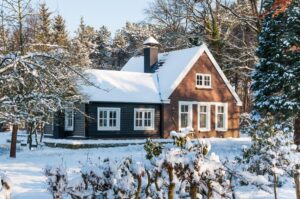Winter-Proofing Your Home Inside and Out
There are many benefits of winter-proofing your home before the cold season arrives. Homes that are properly winterized help keep you and your family warmer, you have greater control over managing your energy bills. Don’t overlook the importance of preparing your fence when winter is approaching. Fences that provide privacy and seclusion from the outside world also require special care. The tips listed below are great recommendations on how to handle the jobs of winter-proofing your home for the upcoming cold season.
Prepare Your Fence for Winter the Right Way
Prepping your fence is a multi-step process. First, you need to remove all debris and dirt that has accumulated on it. Sandpaper is effective for removing built-up dirt. If you’re dealing with mildew or mold, remove it off with a strong, but environmentally safe, cleaning solution.
Once the surface is clean, you can protect by applying a coat or two of high-quality paint that’s designed for the fence material. A fresh coat of paint, stain or sealant stands up to the elements by creating a protective seal.
Methodically Prep All Areas of Your Home
Winter-proofing your home is no easy task. To make sure that you are addressing every part of your home that can cause energy loss, use the checklist below to methodically winterproof your home:
- Roof – Check for any broken or missing tiles
and fix them. Check the ventilation units and make sure they are tightly sealed.
- Gutters – Clear out your gutters so that rain or melting snow doesn’t overflow and cause damage.
- Walls – Check for proper insulation and add it where necessary. One-third of all heat loss happens within your walls, so pay particular attention to them.
- Pavement – Pavement freezes in very cold weather. Make sure the cement in your basement and garage is properly sealed and there’s adequate drainage to avoid issues.
- Windows – You need to make sure that water does not build up on the windows, as this can cause cracking. Installing insulated curtains helps capture the cold and prevents drafts in your home.
- Chimney – Clean out your chimney and perform regular maintenance for safe and optimal performance.
- Doors – Seal the door frames tightly to prevent cold drafts from making their way into your home.
- Floors – Always fill the gaps between floorboards and cover floors that have gaps with rugs in needed.
- Heaters And Boilers– Consider having your boiler serviced before winter because it makes a big difference in heating efficiency.
If you feel any of these jobs are beyond your capacity to complete, hiring a professional is an excellent option. The costs associated with winter-proofing your house are made up for with increased comfort and lower energy costs. Winterizing your home and fence are no easy task, but the lasting results are worth it.


